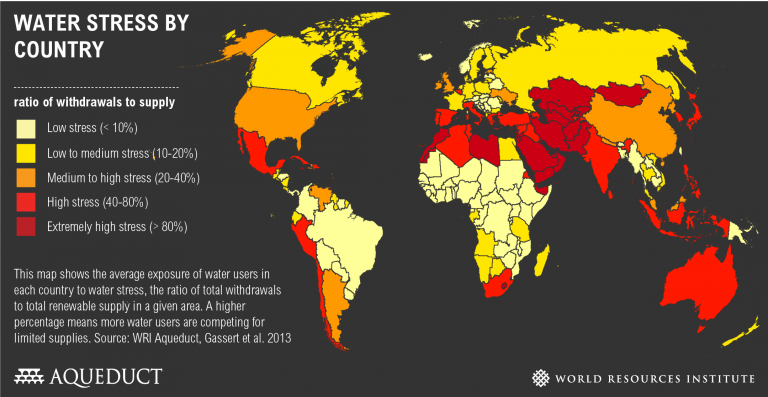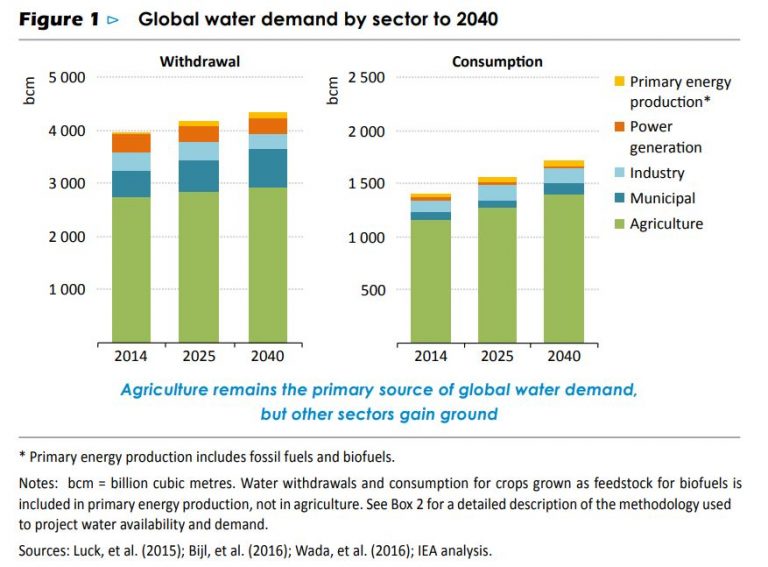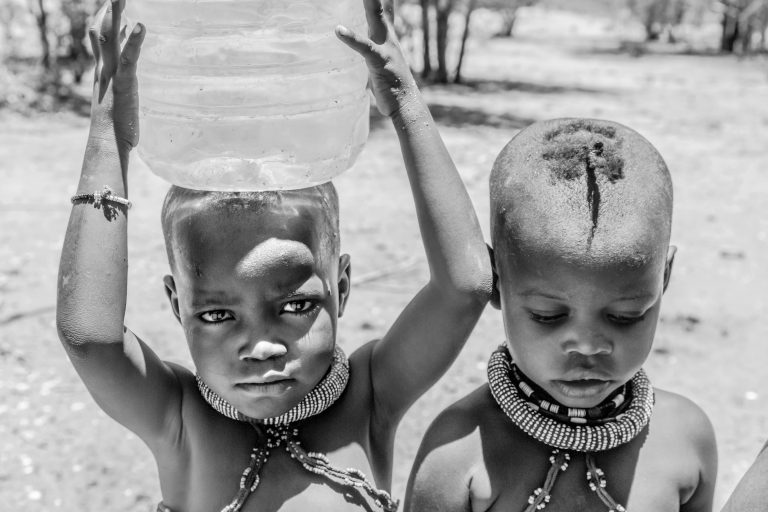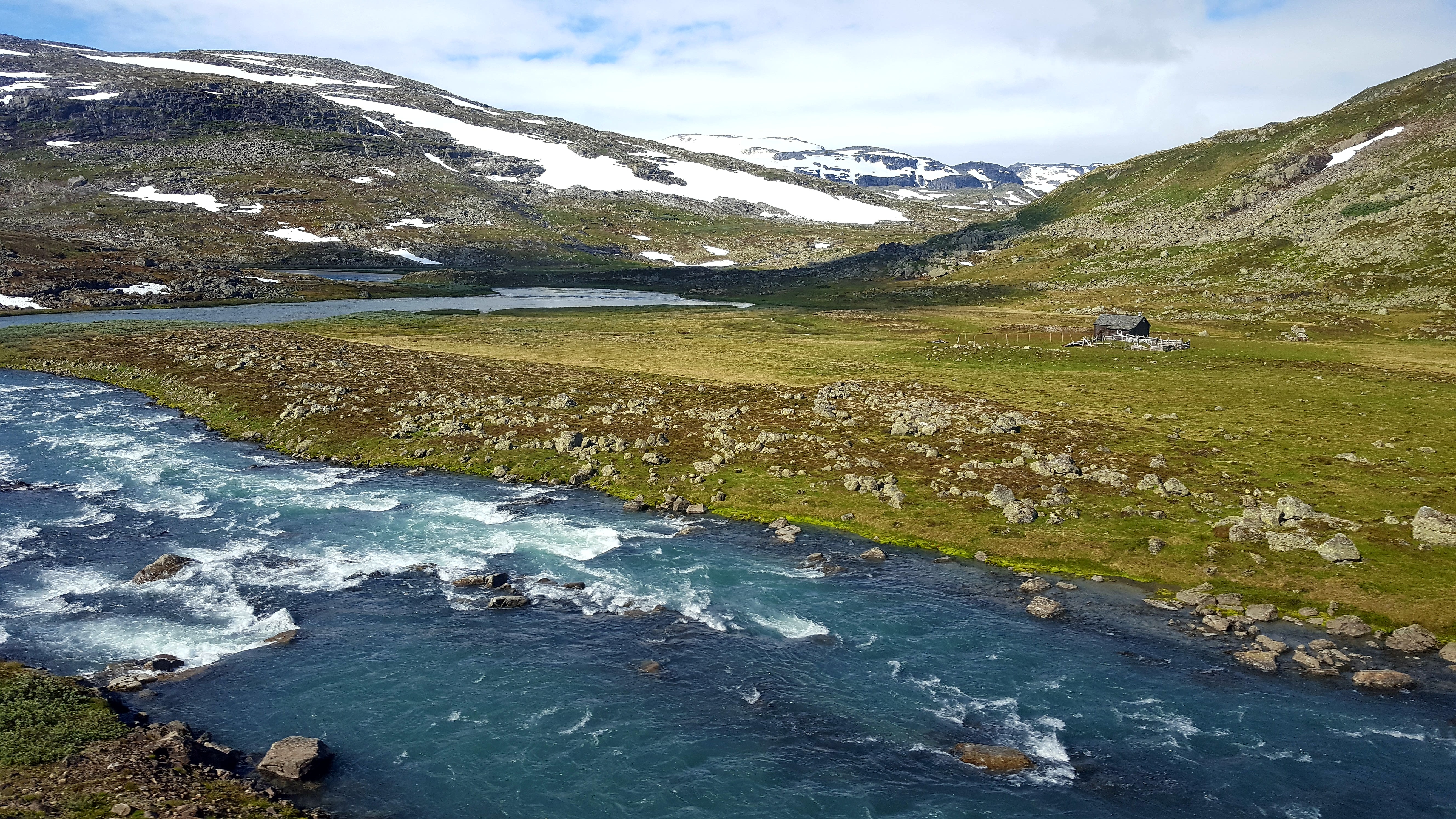By Cora Kammeyer
Water is perhaps the most vital natural resource on the planet. It is necessary for human survival and a critical input into our food, manufacturing, and energy systems. It also sustains the ecosystems and climates upon which both our built and natural world rely.
Today we are putting more pressure on freshwater resources than ever. Between a rapidly growing population and a shifting climate, water stress – and therefore water risk – is increasing around the world. The United Nations Sustainable Development Goal 6 is focused on water, with several sub-goals related to different water challenges. We have seen promising progress, but there is much work to be done to make water sustainability a reality before the SDG target date of 2030.

Global water stress map. Source: World Resources Institute.
Growing Water Demand and Water Scarcity
Humans withdraw about four thousand cubic kilometers of water globally every year – approximately the volume of all the water in Lake Michigan. This is triple what we withdrew 50 years ago, and withdrawals continue to increase at a rate of about 1.6 percent per year. Global demand for water is predicted to increase by 55 percent between 2000 and 2050.

Lake Michigan. Source: NASA.
Much of this new demand will be driven by agriculture, which already accounts for 70 percent of global freshwater use. Food production must grow by 69 percent by 2035 to feed the growing population, which will expand agricultural water needs. Energy production currently accounts for less than 10 percent of global water consumption. But the world’s energy demand is on track to rise 35 percent by 2035, which is expected to increase the energy sector’s water consumption by 60 percent.
This growing demand presents a growing challenge for meeting all of humanity’s water needs. Due to the combination of population growth, unsustainable water withdrawals, and poor infrastructure and governance, in many parts of the world there is already insufficient safe water supply. Sustainable Development Goal 6.4 focuses on ensuring sustainable water withdrawals and reducing the number of people who suffer from water scarcity – of whom there are many. Today 1.7 billion people live in river basins where water demand outstrips supply, known as water-stressed areas. By 2050, this is expected to jump to 2.3 billion.

Global water demand projections to 2040. Source: IEA.
This worsening imbalance of water supply and demand is a problem companies both contribute to, and face operational risks from. Recognizing this, investors are increasingly considering water scarcity as a risk factor when making investment decisions.
Water Pollution
However, water stress is driven by factors beyond the simple physical abundance of water, especially water quality and pollution. Nearly all human uses of water, from agricultural to industrial to municipal, result in water pollution. Currently, over 80 percent of the world’s wastewater is discharged back into rivers, streams, and oceans without any treatment, causing widespread damage to ecosystems and contamination of critical human water sources. Sustainable Development Goal 6.3 aims to improve water quality by reducing pollution – in particular, by increasing the proportion of wastewater that is safely treated before being returned to the system.
Businesses, particularly in the industrial and agricultural sector, are often major sources of water pollution. When companies pollute the waters where they operation, they expose themselves to regulatory and reputational risks. When businesses have facilities in highly polluted river basins they face operational risks, and their water treatment costs often increase.
Insufficient Access to Safe, Affordable Water, Sanitation and Hygiene (WASH)
Physical abundance of water supplies does not necessarily mean there is adequate quantity and quality of water to meet basic human needs. Often, humans are unable to reliably access physically available water supplies due to inadequate infrastructure and weak governance. In 2010, the United Nations formally recognized the right of all human beings to have access to sufficient, safe, affordable, and accessible water and sanitation. But today, 2.1 billion people still lack access to safe drinking water and 4.5 billion people lack safely managed sanitation services. This has major health and mortality implications, particularly for young children in developing countries. Every year approximately 700,000 children under five die due to inadequate WASH.

Little water carriers in Namibia. Photo by: Jessica Mulder.
Sustainable Development Goal 6.2 sets out to achieve access to adequate and equitable sanitation and hygiene for all by 2030. There is a strong business case to take action on this goal; research shows that every $1 invested in improving water and sanitation returns an average of $4.30. Given that adults spend a large portion of their time at the workplace, companies have a critical role in providing adequate WASH for employees, both in direct operations and in supply chains. Inadequate WASH in the workplace poses financial risks to business in the form of declines in productivity and increased absenteeism.
Freshwater Ecosystems at Risk
Freshwater ecosystems are biodiversity hotspots, but they also been the most impacted by human development. Sustainable Development Goal 6.6 aims to protect and restore water-related ecosystems by 2020. These systems are vital to supporting not only plant and animal life, but also to providing essential ecosystem services for humans. The total value of the world’s ecosystem services is estimated at some $147 trillion, but over 60 percent of these are being degraded or used unsustainably. If we continue to degrade these systems, those services – water supply, recreation, and flood protection to name a few – will no longer be naturally available. Businesses relying on these natural services will face extremely high costs in replacing or recreating them.

Freshwater ecosystem art. Source: UN Water.
Impacts of Climate Change on Water
Underlying all the world’s water challenges are the looming repercussions of our changing global climate. Climate change introduces a huge amount of uncertainty to water supply reliability in the future. Where people and businesses could once rely on a safe and stable supply of water, there will be perturbation and threats to that supply. We are already seeing increased intensity of water-related natural events like droughts and floods, and this trend is expected to continue. Sustainable Development Goal 13.1 aims to strengthen resilience and adaptation to climate-related hazards and natural disasters, which the world will increasingly face.
On one side, the number of people at risk from floods is projected to hit 1.6 billion in 2050, with $45 trillion worth of assets at risk. On the other extreme, it is estimated that by 2050, 3.9 billion people will live in river basins under severe water stress. The nature of these impacts will vary by region, changing global water stress dynamics.
This increase in extreme conditions and variability present a major challenge to companies. In addition, corporate action on climate is inextricably linked with water. For example, companies report that a quarter of their greenhouse gas reduction activities depend on a reliable water supply.
No Silver Bullet Solutions
Water is by its nature a local resource. Water stress occurs at the basin or even sub-basin level; issues of supply-demand imbalance and pollution tend to be highly localized. The nature and degree of water stress depends on myriad basin-scale factors such as hydrologic conditions, precipitation, infrastructure, and number and type of water users in a given space and time. This is not inherently bad, but it presents a challenge because solution to water issues must be tailored by location – there is no one-size-fits-all answer.
Compare water to carbon dioxide, for example. The benefit of reducing a unit of carbon emissions is the same no matter where in the world it happens. In contrast, the benefit of saving, treating, or reusing a unit of water varies greatly depending on the conditions of the system from which that water comes. This unique attribute of water means effective progress on all the issues discussed above will require collective action among water users in a basin and careful consideration of the watershed context. Ideally, companies will focus water stewardship efforts strategically in the basins where they will be most impactful.

River in Mydral, France. Photo by: Roberto Marsanasco.
Why Water Matters for Business
All the challenges discussed so far demonstrate that water is a material risk to companies. Companies disclosing to CDP reported $14 billion in water-related impacts in 2016 alone. The resources on the CEO Water Mandate website have been cultivated to help companies understand the nature of water-related risks and why water stewardship is good for business.
This blog post was originally published on the CEO Water Mandate blog.


